That’s a clickbait title 😛
The title shouldn’t be “Categories vs. Tags”.
It should be “Categories with Tags”.
Categories and tags are both used to classify our blog content.
As you can see, they both have different purposes.
So, they work best when used together.
Let me elaborate.
As the name suggests, “Categories” help you categorize your blog posts.
And as I said before, Categories are the broadest way to group similar content.
For example, let’s say you’re running a blog that provides movie reviews.
You could use categories to organize those movie reviews by genre, such as Action, Romance, Drama, Horror, Romance, etc.

This will help the visitors look for the kind of movie they’re currently in the mood for and decide after reading its review.
Also, if you notice, the above categories are not revealing much information.
For example, if a review is categorized as “Action”, it is not telling whether it is a review for a martial arts or war-based action film.
There are many types of action films.
This is why I called “categories” the broadest way to group similar content.
But tell me something.
What if a visitor wants to watch something more specific?
For example, what if the visitor wants to find a movie that is not just an action film but a war-based action film?
For example, under the “Action” parent category, we might include sub-categories such as War, Martial Arts, Superhero film, etc.
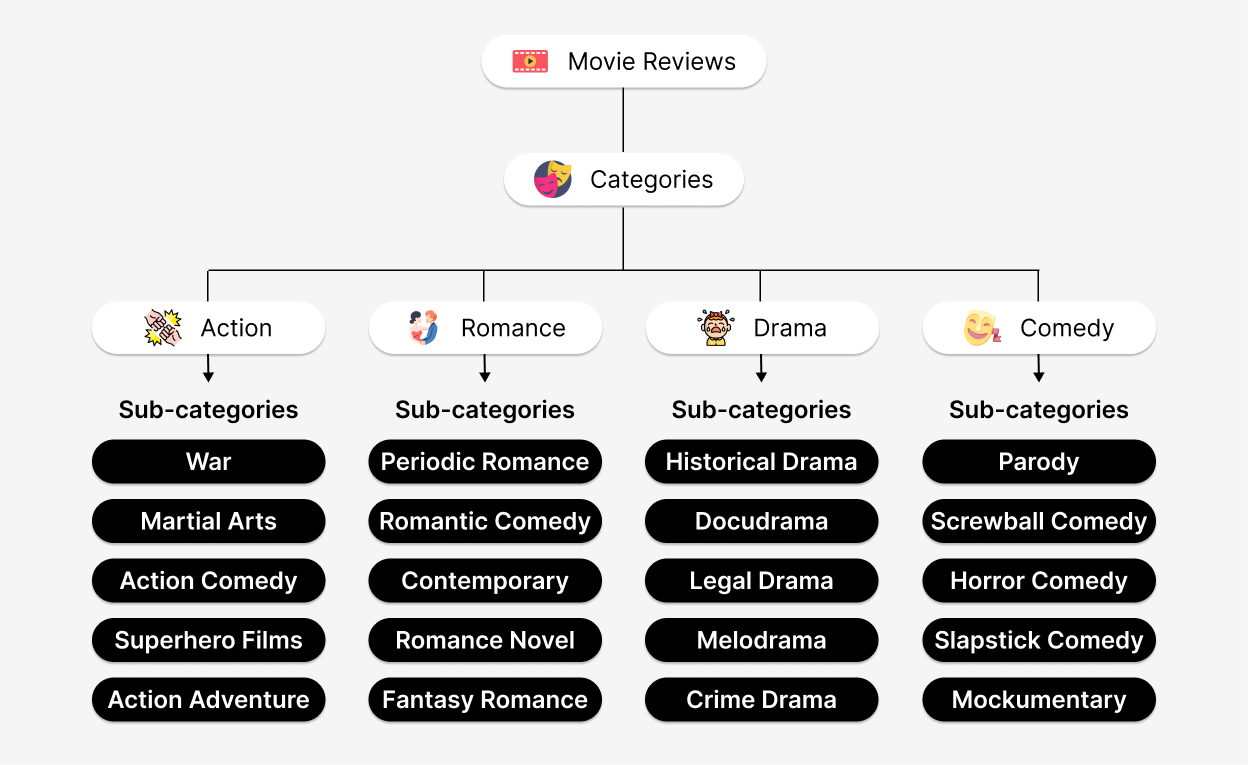
As you can see, with the help of Sub-categories, we got more specific when organizing our posts.
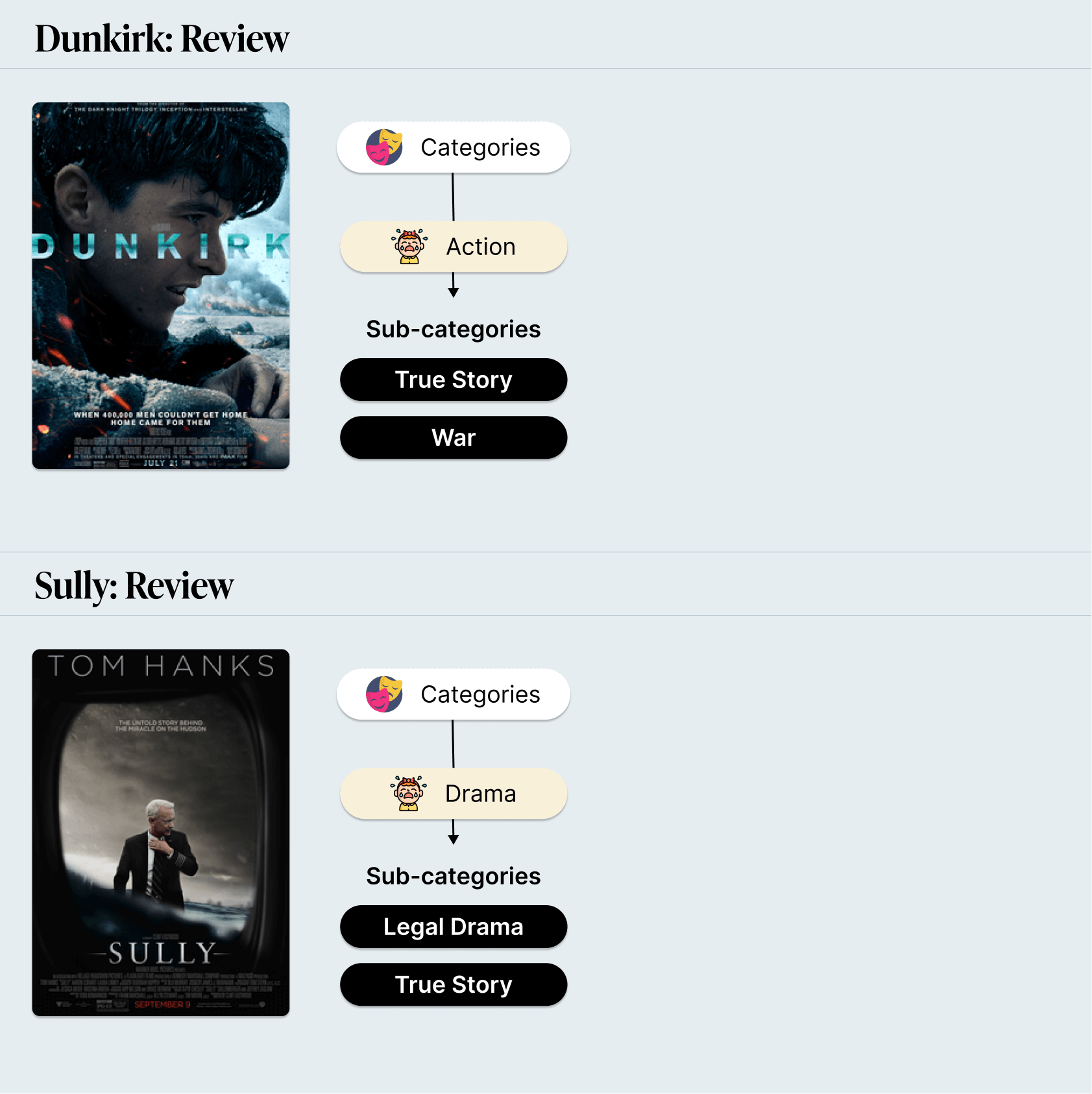
But tell me something again 😀
What if you want to get even more specific? (at a granular level ).
For example, what if your visitor wants to read reviews with a specific actor or actress instead of sorting the movie reviews by genre? Like Tom Hardy?
If you want to use categories again, here is what it could be like:
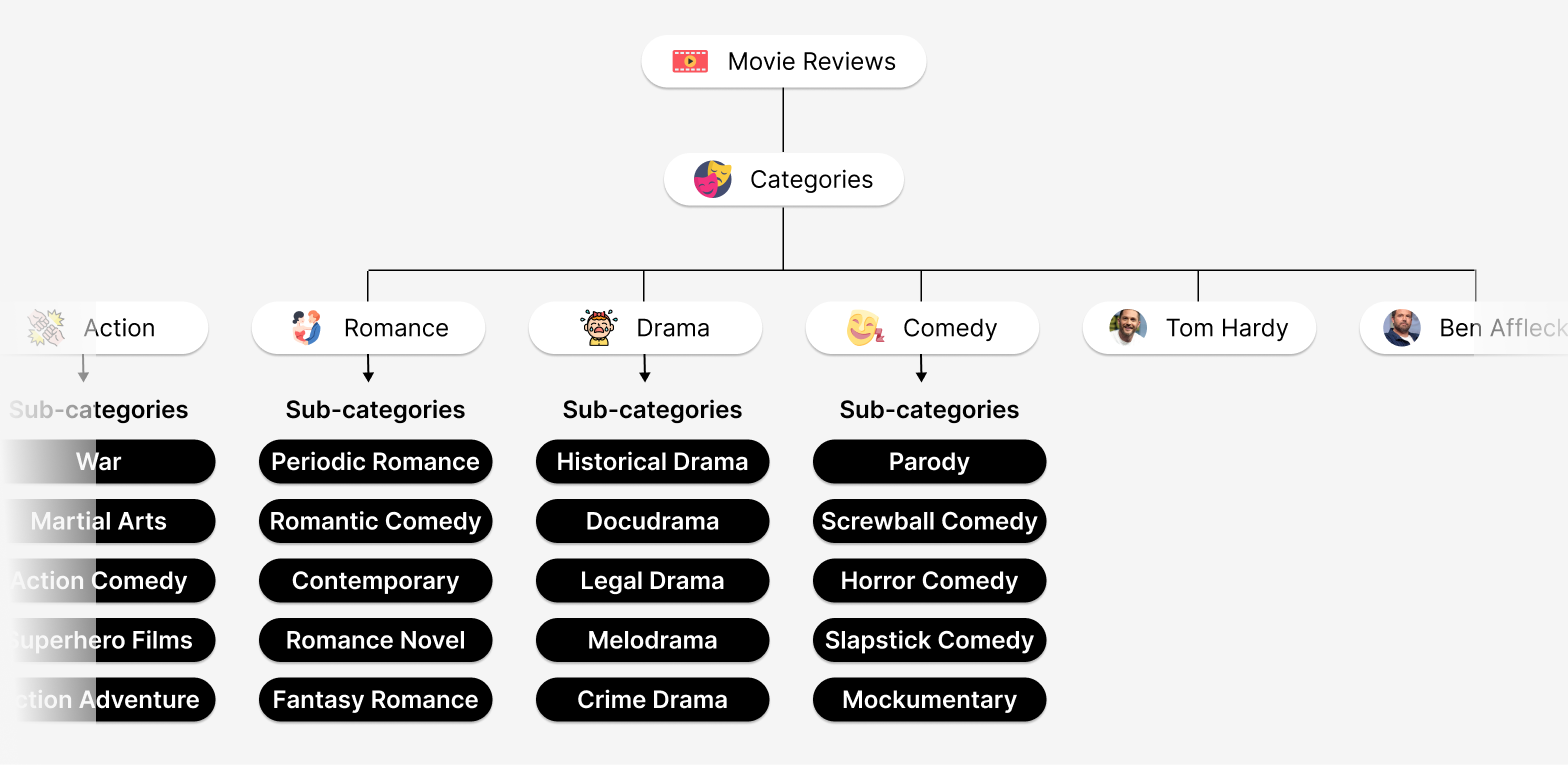
Or like this:
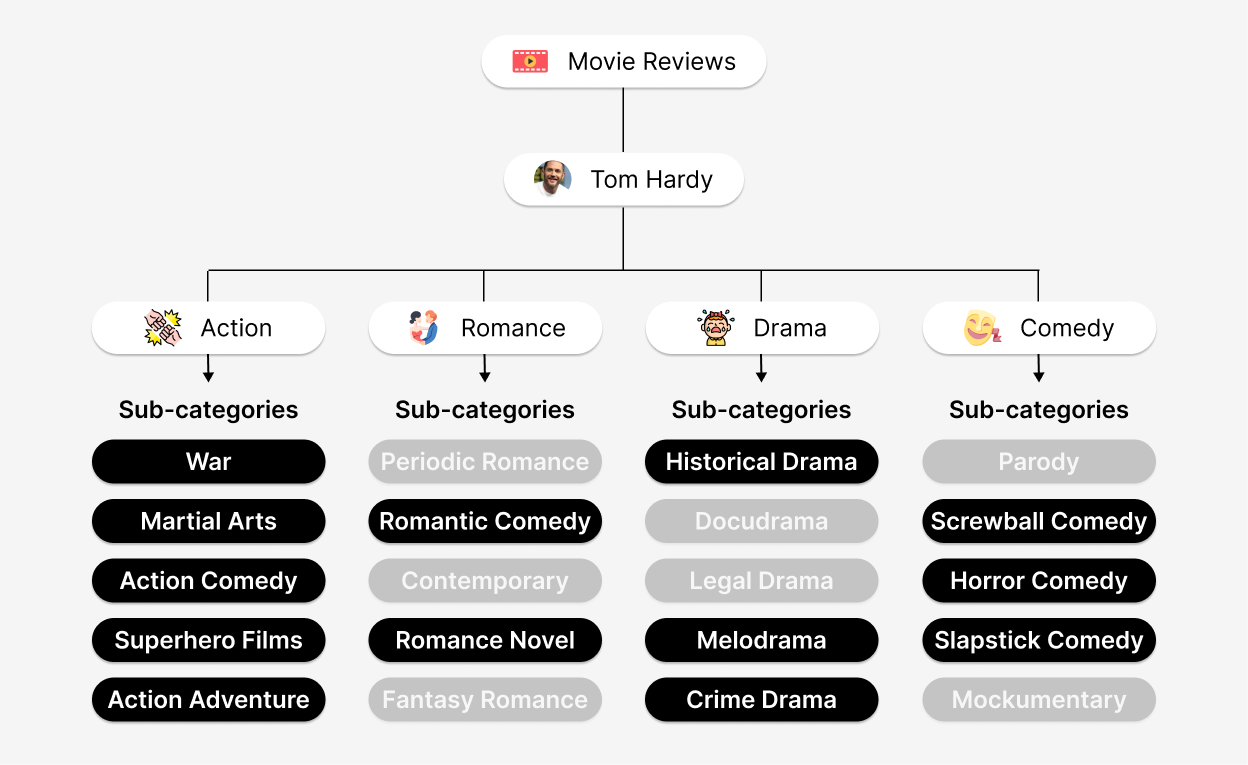
Now imagine creating these category structures for hundreds of artists.
Do you think it’s practical?
Categories are not a good solution here because trying to create a category for every actor and actress would be difficult and unusable.
It will also pollute the main genres as categories.
So, what is the solution for sorting out posts in a more specific way?

Tags?
Exactly!
Tags are specific descriptors that you can assign to posts.
Simply put, the Tags will help us convey what a particular blog post is all about.
For example, let’s say we wrote a blog post, “Five types of Invoicing” and inside the blog post, we spoke about:
We can use those five names as the tag names because we discussed those invoices in the article.
Another example.
Let’s go back to our movie reviews example.
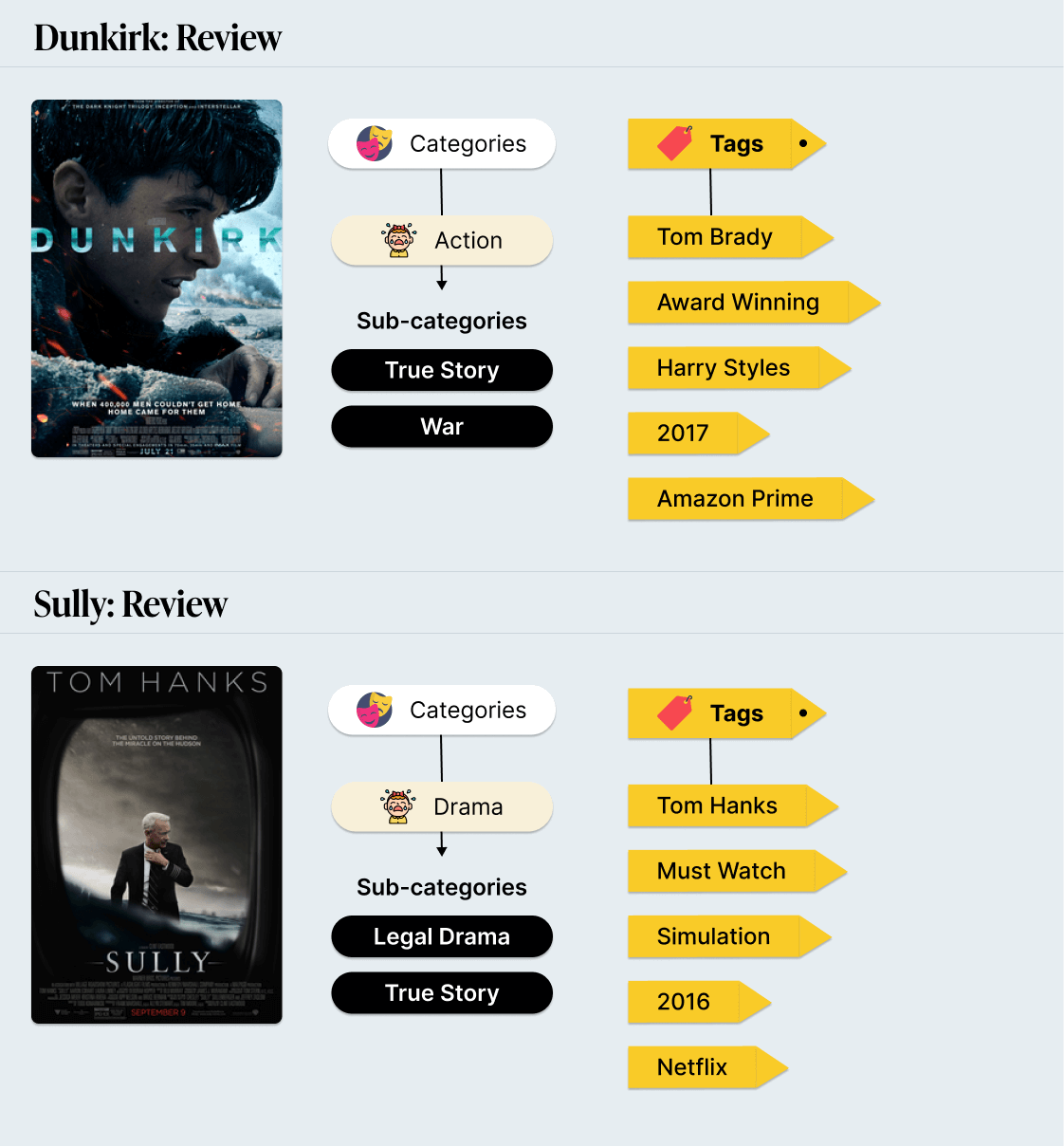
For movie reviews, you could simply add tags with the names of actors and actresses in any movies they played a crucial role.
When visitors read your reviews and see a tag for an actor they like, they can click on it to see all of the other reviews in which the actor is tagged.
You could also use tags to indicate many different types of information.
For example, you can add verdict-related information such as “Must Watch” or “Flop”, etc.
You can also add tags such as “Award Winning”, “Release year”, etc.
All these tags give ultra-specific information to the visitors and help them decide whether to watch the film.
That is, Categories can have sub-categories, but tags can not have sub-tags.
Categories can have sub-categories because the parent category is too broad, and sub-categories are helping us to be more specific.
But Tags can not have sub-tags because they are already granularly specific.
You might have noticed it already, but I just wanted to clarify.

Remember that the above hierarchical categorization type is impossible with the “Tags” taxonomy.
As I said at the beginning of this lesson, Categories and Tags support each other when it comes to organizing content on blogs.
Being able to sort out posts both in a broad way and in a specific will give the website visitors the ultimate control to find things quickly and easily.
Having said that, do not go overboard by adding too many categories or tags to a blog post.
Usually, for each blog post, it is recommended to add one or two categories and up to seven or eight tags.
Adding too much classification could also hurt the user experience of the visitors.
That’s all you need to understand about Categories and Tags in WordPress.
In the next lesson, We will plan categories for our blog.